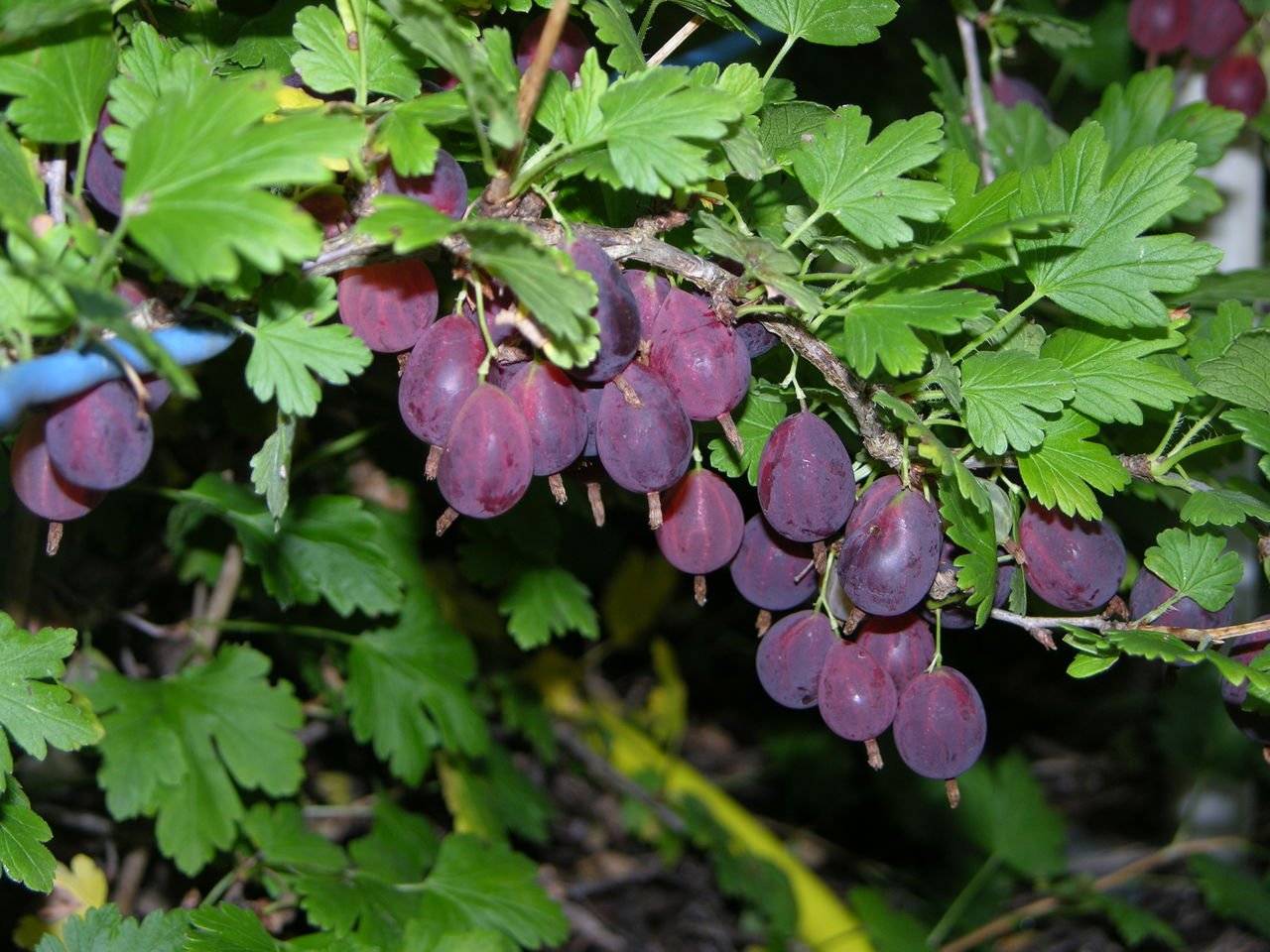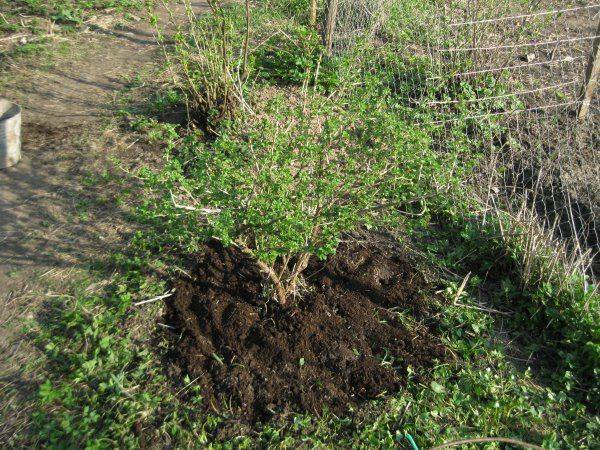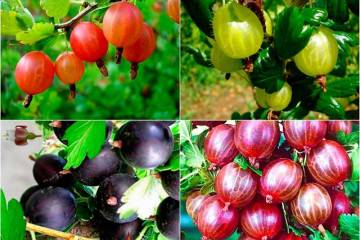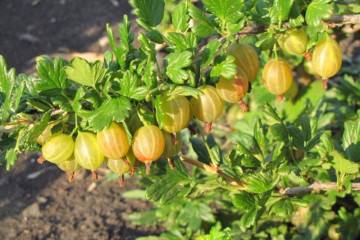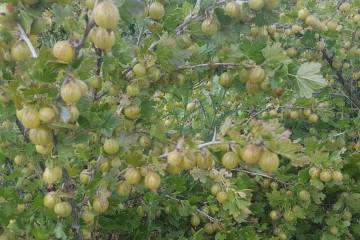Gooseberry Grushenka - features and characteristics
Content:
The gooseberry called Grushenka attracts attention with its unusual shape of berries. Expanded at the bottom, they look like a pear. Below is information about the cultivation of Grushenka gooseberries in the garden.
Description and characteristics
Gooseberry Grushenka is distinguished by good immunity, the ability to withstand high and low temperatures.
Origin story
The hybrid was developed by Russian specialists in the 80s. last century. The breeders were tasked with creating a frost-resistant variety, which they successfully coped with.
Gooseberry bushes are medium-sized, slightly spreading. The leaf plates are green shiny. The gooseberry leaf is oval, slightly widened at the bottom. The venation is finger-reticulate.
Features of the variety
Grushenka is a gooseberry, which is very popular for the appearance and high taste of the fruit.
Ripening period and yield
The first berries can be picked at the end of July. The harvest is massively harvested in August. Bushes are fast growing. The berries appear the next year after planting. About 5 kg of fruits are harvested from one plant.
Taste qualities
Grushenka's berries are sweet, with a slight sourness. The juicy pulp contains a large amount of nutrients. Experts assess the palatability of the fruit at 4.6 points on a 5-point scale.
Drought resistance and frost resistance
Gooseberries (variety Grushenka) are able to withstand dry, hot weather. Frost resistance is also top notch. Plants can withstand temperatures down to -30 ° C without shelter.
Disease and pest resistance
The hybrid has good immunity. He can be struck by fungal diseases with gross mistakes in care. If the weather is too dry, there is a possibility of the appearance of a spider mite.
Using berries
The fruits are consumed fresh. They are also used to make jam, compote, jam. The berries can be frozen for use in the winter.
Advantages and disadvantages
The positive qualities of Grushenka gooseberry include the following characteristics:
- stable yield;
- high palatability of fruits;
- frost resistance and drought resistance;
- lack of thorns;
- good immunity.
Negative properties include the inability of gooseberries to develop on wet soils.
Planting young seedlings on the site
Purchase gooseberry seedlings in a plant nursery or garden center.
Selection and preparation of seedlings
For planting, bushes with 2-3 shoots and a well-developed fibrous root system are chosen.The bark should be elastic, without dents, signs of disease. For several hours, the bushes are placed in a container of water.
Seat selection
The culture will develop both in a well-lit place and in partial shade. The area must be protected from cold winds. The gooseberry prefers to grow in loamy soil.
Site preparation
The landing site is cleaned of plant debris, dug up. If the soil is infertile, rotted manure or compost is introduced into it. You can also add dolomite flour or potash salt to the soil.
Planting process
Gooseberries are planted on the site as follows:
- Dig holes 50 × 50 × 50 cm in size.
- Fall asleep with a fertile substrate.
- A seedling is placed in the pit, the roots are straightened.
- Fall asleep with earth.
- Water abundantly.
Features of seasonal care
To increase the yield and quality of berries, it is necessary to carry out agrotechnical measures correctly.
Watering and feeding
Water the gooseberry after the top layer of the soil has dried. During the season, irrigate the land under the bushes at least 4 times. In early spring, the culture is fed with nitrogen, during the budding period - with potassium and phosphorus.
Mulching and loosening
A few days after watering, the ground under the bushes is loosened. This must be done to allow air to reach the root system. The trunk circle is mulched with humus, sawdust, straw.
Using supports
A large number of berries grow on the gooseberry, under the weight of which the shoots can tend to the ground. Therefore, during this period they need support. Pegs are driven in near the plants, branches are tied to them.
Preventive treatment
In case of improper care or adverse weather conditions, gooseberries can suffer from pathogenic microorganisms and be attacked by pests. Therefore, in the spring, the bushes are sprayed with insecticides and fungicides for prevention.
Pruning
In early spring, frozen, diseased, broken shoots are removed. Branches older than 3 years are completely cut off. A well-developed bush should have 5 central shoots and 12-15 branches of different ages.
Preparing for winter
In the middle of autumn, the bushes are watered abundantly. The presence of moisture in the soil will help the gooseberries survive the winter safely.
Reproduction
On the site, the culture is propagated by cuttings or layering. Seed propagation is not used due to its laboriousness. In addition, with this method, the characteristics declared in the description of the gooseberry Grushenka may not be transmitted.
Cuttings
The procedure is performed as follows:
- Cut a stalk 15 cm long.
- The lower part is powdered with root.
- They are planted in the ground at an angle of 45 °.
- Watering.
Soon, young bushes are formed from the cuttings.
Layers
For reproduction in this way, a small groove is dug near the bush. An escape is laid in it, pinned to it. During the season, the place of contact is watered. When new bushes develop, they are separated from the parent plant, transplanted.
Grushenka is a gooseberry variety with fruits extended towards the bottom. Bushes are unpretentious to care for. The berries are purple. With properly performed agricultural technology, abundant fruiting can be expected from late July to mid-August.
